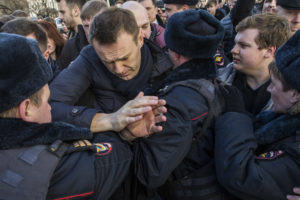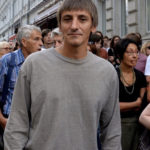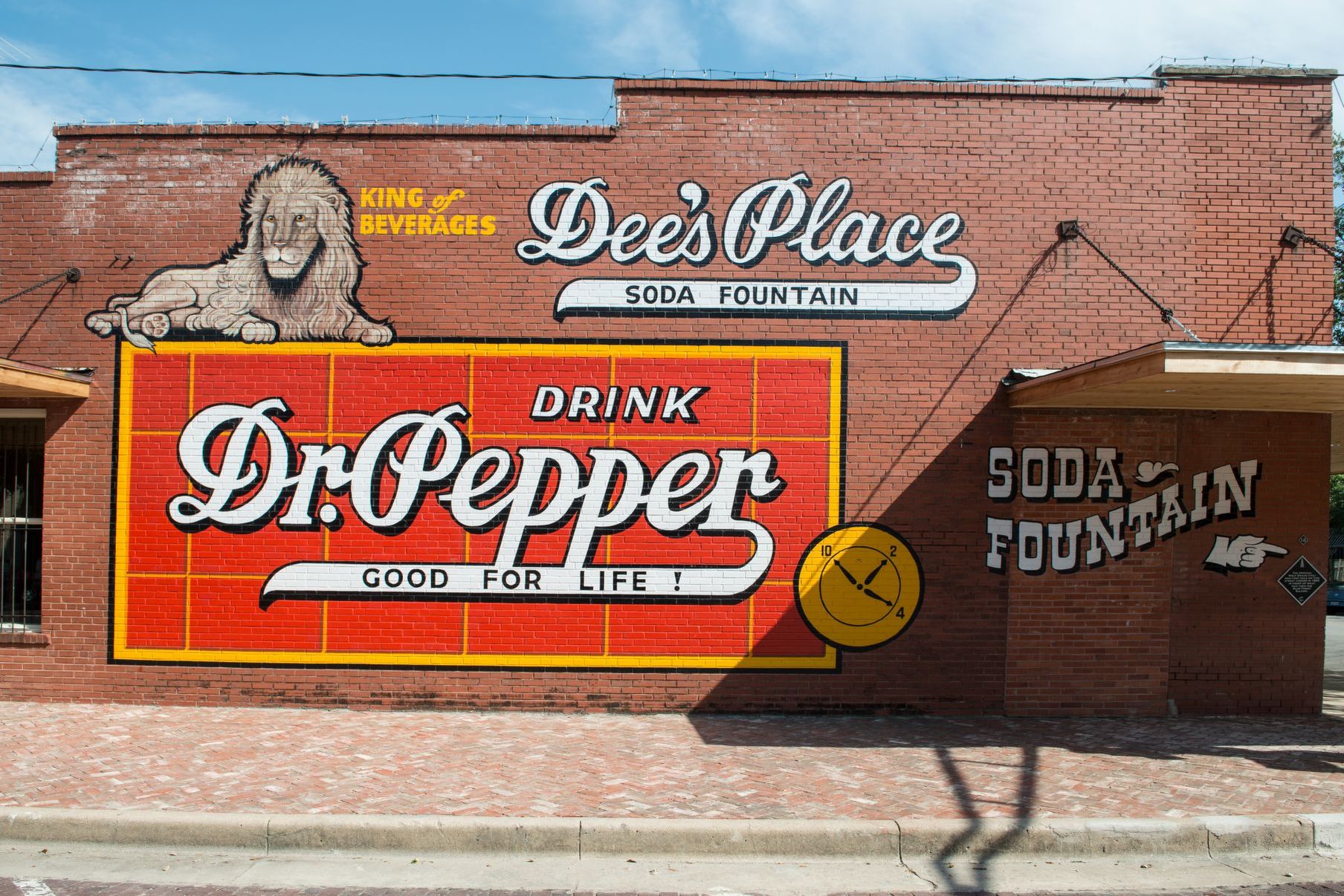It was Monday, December 5, 2011—a grey, warm afternoon, and a thin cover of snow started melting again around Dmitry Medvedev’s luxurious mansion in Gorki, outside Moscow. Medvedev, Russia’s outgoing president, was in a good mood. His presidential watch was almost over—in a few months, Vladimir Putin would replace him in the Kremlin—yet he had a reason to celebrate with his staffers: the vote count of the parliamentary election the day before was showing that United Russia, the ruling party, performed well and secured a majority in Russian Duma. Medvedev was heading United Russia’s ticket. It was part of the “castling” agreement with Putin, announced two months earlier: Medvedev would step down as president and take Putin’s job as prime minister and also his position as the party leader, so it was as much United Russia’s victory as his own. At some point, amidst small talk and yet another glass of champagne, Medvedev was briefed about the unusually large number of demonstrators gathering at one of Moscow’s boulevards to protest against what by that time appeared to be a heavily rigged vote count. Medvedev didn’t take it seriously and dismissed a suggestion to contact the minister of the interior. If it was a big deal, Medvedev said, the minister of the interior would find him. Two hours later, the minister of the interior reached out to the president to inform him that dozens of protesters had been detained after breaking through the anti-riot squad perimeter. Street protests on a scale Russia hadn’t seen since the fall of the USSR, which would grow into the anti-Putin Bolotnaya movement, had just begun.

Political change in Russia centers around Moscow, the country’s most liberal and westernized city. In 1990, up to half a million Muscovites walked into Manezhnaya square, right beside the Kremlin walls, to protest against the communist leadership. In 1991, they took to the streets, overthrew hardline communist conspirators, and the Soviet system fell into oblivion. In mid-1990s, Manezhnaya Square was built up with a huge shopping center, supposedly, in order to make it inaccessible to large crowds. That shopping center, with its many underground floors, all furbelowed with Russian history-themed foofaraw, became a harbinger of what in few years would constitute a major trend: under Putin, politics fell out of fashion and was replaced with consumerism. In 2011, heavy electoral fraud—a traditional trigger for a revolution—was certainly not the first of its kind. In fact, as has been confirmed by statistical analysis of the official electoral data, since 2007, every major Russian election had been heavily rigged—most people just didn’t care. But by 2011, there had already been a change in the air—in Moscow, at least.
“I remember the “castling” and Medvedev’s face, when he returned the favor and nominated Putin for president on September 24,” recalls Ilya Krasilshchik, the then 24-year-old editor in chief of Afisha magazine, Moscow’s version of Time Out—“I remember myself opening Facebook and there everyone’s, like, ‘we’ve been dumped.’” In the 2000s, converting from a Soviet wreck into a modern capital, Moscow was probably the fastest changing city in the world; and by 2011, Afisha, with its motto “It will be as we say,” was Moscow’s primary lifestyle trendsetter among hipster youth (for at least a few years). But unlike the 2000s, by 2011, Afisha—as well as other lifestyle outlets and, most of all, Facebook, which had recently emerged as a primary communication platform—was in the vanguard of political protest. The protest started to take shape immediately after Medvedev announced he would step down as Russia’s president. Not that he was that popular as a leader, but the mere fact of presidential succession had fostered hope that Russia would develop as a normal, civilized state. Now, the announced return of Vladimir Putin served as proof that Medvedev’s presidency was a sham, and from its very first day, Russia’s future had been in thrall to their secret deal.
Street protests on a scale Russia hadn’t seen since the fall of the USSR, which would grow into the anti-Putin Bolotnaya movement, had just begun.
Facebook was boiling with anger, Afisha started publishing sharp political commentary, Bolshoi Gorod, another of Moscow’s hipster weekly publications, ran “Send both into retirement” on its cover. Hundreds were signing up as election observers, a totally new phenomenon, and tens of thousands decided to go out and vote—something they never felt like doing before. So-called systemic opposition had long developed the reputation of being loyal and corrupt, and therefore, all parties on the ballot looked highly unattractive. Yet, the young, but already quite popular, anti-corruption blogger Alexei Navalny came up with the voting strategy: anyone except United Russia—and his appeal was widely heard. This mood, this growing energy in Russia’s capital, formed part of a larger national trend: Putin’s approval rating has fallen; meanwhile, the label “the party of crooks and thieves”— coined, again, by Navalny—has definitively stuck to United Russia.
In this context, Putin’s party with Medvedev at the top of its ticket seemed doomed to fail at the polls on December 4. Hundreds of videos with evidence of extensive electoral fraud went viral right after the vote count. (Subsequent analysis of the electoral data showed that, most likely, more than a million votes had been stolen in Moscow alone.) The protest rally on December 5 reached close to 8,000 protesters. After the rally, Krasilshchik ended up as one of the organizers of the next one, on Bolotnaya Square in the center of Moscow. This time, at least 50,000 Muscovites showed up—a record-breaking number, a breathtaking picture, and, probably, the happiest moment for the newly born anti-Putin movement. There would be at least one more large rally, but the joy of being together and sharing the same emotion, was at its freshest and most genuine on Bolotnaya, on December 10. The natural question “What now?” was not yet hanging above the protesters like a sword of Damocles.
When Krasilshchik got home that day, the first thing he did was post on Facebook. “Today, I saw the city of my dream,” the post read. “It has many beautiful, cheerful, different people. It has respectful cops.
Tens of thousands decided to go out and vote—something they never felt like doing before
Its residents feel they are together and they help each other. Even television in this city is professional and nonpartisan. [The censorship eased its grip when Bolotnaya protest was at its peak—MF] I didn’t know this city could be such. … And what did we say about hipsters, about millennials who need nothing but their iPhones? Now look at those who showed up today— are we still confident we were right? It will happen again soon—in a week, or two. We will probably take to the streets again. There will be probably more of us. And, again, we will see the city that we want to live in.”
Of course, the Bolotnaya movement can’t be reduced to a bunch of hipsters. In Moscow, they have made up the vanguard who took to the streets, but echelons of supporters stood and waited behind the lines. According to opinion polls, 46 percent of Muscovites sympathized with Bolotnaya, to a greater or a lesser extent. And the nation kept its eyes closely on the battle. The vote rigging, brazen and evident, embodied falseness and hypocrisy as mainstream principles of nearly every Kremlin policy. In this sense, Bolotnaya protests succeeded in creating social dissent not seen since late Soviet times—the widely shared perception that official communist ideology is deceitful and based on lies. And, from the start, the Bolotnaya movement was a moral rebellion rather than an attempt to overthrow the government. It saw its mission in closing the gap between everyday social life—democratic, civilized, modernized (specifically in Moscow)—and the government’s archaic, authoritarian approach. It was an idea of a peaceful pressure which would bring about change. “We felt we have that grasp of soft power and we can peacefully change everything,” recalls Krasilshchik.
Alexei Navalny echoes this sentiment. Two weeks after the Bolotnaya Square rally, the protest movement reached its highest point when 80,000 protesters gathered on Sakharova Avenue, and Navalny emerged as the face of Russia’s motley protesting crowd. He believed, too, that in one or two years Putin’s political regime would yield. Now, he recalls his logic of those days: “We will advance, they will retreat, and eventu- ally we will win an election.” But very soon, he would acknowledge how inconceivably naive he had been back then—just as much as Krasilshchik and other Bolotnaya wishful thinkers.
At least 50,000 Muscovites showed up—a record-breaking number, a breathtaking picture, and, probably, the happiest moment for the newly born anti-Putin movement.
Demands of the protesters—primarily, new parliamentary elections—have never been met. Not a single co-conspirator of the vote rigging—despite the abundant evidence—has been brought to justice. At first, Vladimir Putin applied killing-the-clock tactics. But after he secured his own re-election in 2012, he clamped down on the Bolotnaya movement, which had already started to lose momentum and wane in its desperate attempts to make any real progress. The protest rally on May 6, the day before Putin’s presidential inauguration, marked a turning point when it was met with extraordinary police violence, and resulting in more than 400 protesters were detained. There’s still a debate about who was to blame: some protesters broke through the perimeter after they have been squeezed into what looked like an intentionally organized trap. Technically, either side could have instigated the violence. But politically, the picture was pretty clear: Vladimir Putin launched a massive attack on the Bolotnaya movement.
After a few more months, protests were defeated.
Dozens of activists were sentenced to jail, and the crackdown was codified with repressive legislation designed to bar protesters from taking to the streets or even from speaking out. Political arrests and prosecutions have become routine. Bolotnaya had no leaders—except for, to some extent, Navalny—yet among those who had been in the forefront of the Bolotnaya movement during its short blossom, practically everyone left Russia within a year or two. Many of those who took part in the protests have left, too. The city of their dreams never came to life.
But in Russian political life, suffering defeat doesn’t mean your enemy has won. After Vladimir Putin returned to the Kremlin in 2012—in what he erroneously expected would be a smooth ride—he didn’t feel secure. The street rebellion had been squashed, yet he realized he was not that welcome anymore. His approval ratings, though very high by the standard of any normal democracy, still remained at their lowest since they had fallen in 2011.
And the problem continued to manifest. For example, Alexei Navalny, one of those who decided to stay and fight, became the leader of the Russian opposition, as well as the primary target for state prosecutors and law enforcement. In September 2013, he created a stir, suddenly nearly making it into the second round of the Moscow mayoral election. In order to make things work again, Vladimir Putin had to reboot the system—and so he did. In 2014, the annexation of Crimea generated a new social consensus that spiked Putin’s approval ratings to new heights, marginalizing any and all opposition to the president and his agenda.
It was then, in 2014, that Ilya Krasilshchik finally moved, too—to neighboring Riga, Latvia—and launched a free, uncensored news website, an impossible task, had he stayed in Russia.
Now in Moscow’s post-Crimea reality, the city, given its rebellious recent past, has a unique and specific mission—it is the landmark of Putin’s Russia, and a showcase of the new political order. Moscow has gone through a drastic change, a complete renovation. Since 2014, billions of dollars have been invested in its beautiful parks and magnificent public spaces, its stadiums and workouts, its cobblestoned pavements and pedestrian malls, its modernized public transit system and its totally revolutionized municipal service centers.
On the surface, Moscow now looks like the city that hipsters from Bolotnaya were dreaming about. But inside, it’s quite the opposite—an expensive, sophisticated model of an authoritarian consumer-oriented paradise brought to life and operated from above, by some supreme governing body. And, so far, it has worked: in Russia’s most liberal city, which had rejected Vladimir Putin so ardently in 2011, he finally claimed a landslide victory in his fourth presidential election in March 2018. As Maxim Trudolyubov, a prominent economic and political writer, put it, the city’s once “disgruntled subjects have transformed into satisfied customers, skipping the stage of being citizens.”
Contributor
Mikhail Fishman is a Russian journalist, filmmaker and host of the independent tv program Dozhd. He is the former editor in chief of Russian Newsweek and of Moscow Times.




